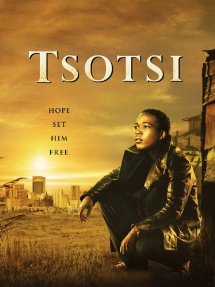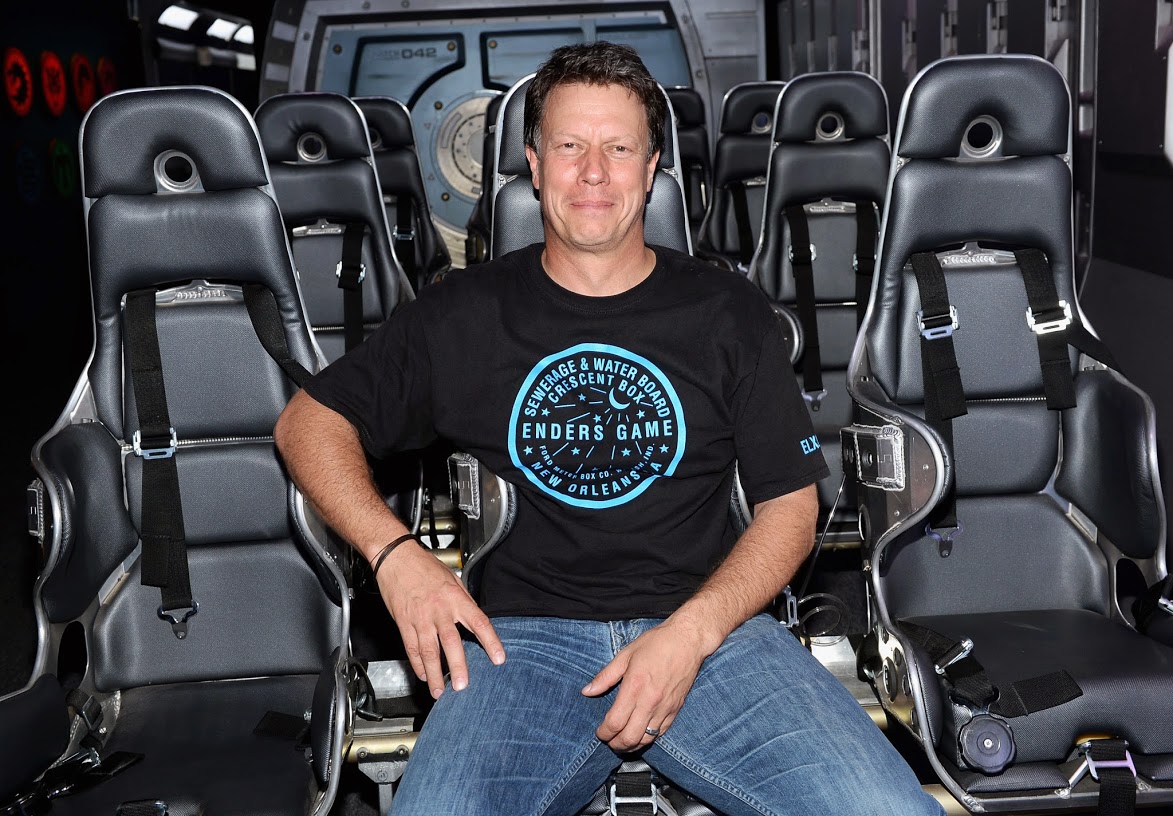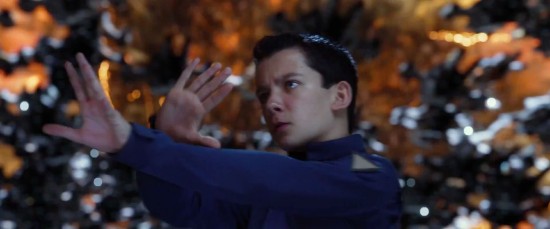You are reading Part 2 of a five-part Ender’s Game set report series scheduled for the next week.

Before I stepped on the set of Ender’s Game last May, I wasn’t sure what to expect. Would I be bored? Should I bring a book? What the heck was I going to do without my phone for an entire day?
I’d been on sets before, having been a background extra for tv shows and movies and it’s usually fun, but it can also be a pretty dull affair. I’ve been yelled at by an assistant director and hilariously over-the-top coached by a PA who would eventually end up having a baby with Evangeline Lilly. I spent an afternoon as a booze cruise passenger on a boat off Waikiki, at one point with George Clooney an arm’s reach away. In contrast, I once spent an entire day napping on a concrete floor, never getting picked for any scenes.
But I’d never been on a set as press and I’d certainly never met a director before. So when Gavin Hood walked into our little chat with the cast and proceeded to talk to us with genuine excitement and friendliness, it definitely made for an amazing first impression.
Since our time on set I’ve had the pleasure of speaking with Hood twice and each time he’s been gracious and exceptionally open to talking Ender’s Game. Mention his name to the young cast and their faces immediately light up as they excitedly proclaim how amazing it was to work under his direction.
We were in the middle of listening to Asa Butterfield (Ender Wiggin) trying to describe the process for what I like to call “arm acting”. Someone in the room had asked how he does it with nothing there as a guide.
Hood, more than happy to describe the process to us in detail, explained that it wasn’t up to Butterfield to get each point of a specific motion exactly right, but rather the reverse: the graphic artists work around the motions Butterfield uses. “It’s not like, “Oh my God, you have to point at exactly that because that is where that graphic is.” Well, the graphic isn’t there yet.” he explained. “It’s kind of organic.”
Another area that the young actors had to visualize on their own was the Mind Game, which is interspersed in short bits throughout the movie and is used to present moments of discomfort that ultimately shape Ender’s moral compass with audiences. Hood recounted a scene with Ender and Alai, in which Alai is watching Ender play the Giant’s Drink and becomes alarmed when he has the mouse gouge the eye out of the giant. Ender’s facial emotion when confronted by Alai can speak volumes for his character. “That’s what great acting is. It’s that moment when that awkwardness from that little act that tells you volumes in an unspoken way.”
More Than Just Another Space Movie
Hood spoke a lot about how important it was to him to present a story that got kids talking. Is this good leadership? Bad? Is it responsible? Was Ender right or wrong? And while he’s said that he’s most excited for fans to see the Battle Room sequences, he’s not all about the epic battles and confrontations.
“So often there are films that we go to and they’re fantastic and they’re fun and they’re wonderful. But it’s like, “Well, that was great. Wanna get pizza?” as opposed to a story like Ender’s Game where kids really talk about it. “Well, what do you think about the way Ender made that decision? Was he too violent, or wasn’t he?” These are important conversations, I think, for young people to engage in in an exciting way. If you can deliver that kind of debate and conversation in an exciting, visually powerful way, then I think you’re getting a little more than just spectacle.”
Ender’s Game is not going to lack in spectacle, but it meant a lot of work in pre-production, especially since they were building so many real sets. Nonso Anozie, who plays Sergeant Dap, said the sets really helped him as an actor. “You’re not just looking at green screen all the time. There’s a lot of reality there. And as an actor it’s so good.”
It also took the combined efforts of production designers, sculptors, concept artists, and many more to ready the set for shooting. “You don’t just arrive and say, “Hey! What does the set look like?”” Hood joked.
Inspiration and Adaptation
When asked what his favorite sci-fi movie is, he quickly named 2001: A Space Odyssey and told us that it played a small role in attracting him to Ender’s Game. “[Kubrick] had an amazing digital sense and an amazing ability to combine adventure with thought-provoking material and give you a sense of both an epic journey and an awe-inspiring journey as well as an emotional story.” That certainly is a fitting way to describe the story of Ender Wiggin.
It wasn’t just about adventure though, but character. Hood was certainly aware that the film was ultimately about Ender, but the kids around him completed a puzzle that, when put together, was special and unique. “You’ve got all these marvelous, strong, well-defined characters engaged in really human and emotional stories. Bean, and Dink, and Alai, and Bernard […] and obviously Petra and Sergeant Dap. I just think it’s rich in character.”
Attracted to stories that follow characters at defining points in their lives, Hood went on to explain his personal connection to the story of Ender. Drafted into the military at the age of 17, he knew on a personal level how it felt to be looked upon as a number in an organization with authority figures he was not supposed to question. “I connected with this book in many ways based on, I think, feelings and experiences that I had had.”
 When we asked about the challenges of adapting a beloved novel, Hood referenced his work on Tsotsi, another book to film adaptation he directed that won the Oscar for Best Foreign Language Film in 2006.
When we asked about the challenges of adapting a beloved novel, Hood referenced his work on Tsotsi, another book to film adaptation he directed that won the Oscar for Best Foreign Language Film in 2006.
“It was an adaptation in which I made many changes — and [the author] was very pleased with it. He said, “Because you stayed true to the spirit of the character.” So I try to think of my characters when I’m adapting as existing outside of the material. I’m not adapting a book. Sounds like sacrilege: I am not adapting a book. I’m collaborating with an extraordinary artist who wrote that book who described the character in his medium, that now has to be translated into another medium.”
As an example, he asked us to imagine being given a photograph to create an oil painting and a sculpture. The three mediums are then presented to a class, who then proclaim that the oil painting looks nothing like the sculpture. “Of course it doesn’t. That’s an oil painting and that’s a sculpture. The question becomes: Does the oil painting capture the spirit of this boy in some unique way? Does a pencil sketch capture his spirit in a way that moves you? Does the sculpture capture the spirit in a way that moves you? And that for me is the same with books.”
Since a lot of what happens in the book are internal thoughts of Ender, Hood had to create a lot of scenes that generated feeling in a completely different way than a book. He talked about finding moments underneath and between the lines of two characters interacting. It was a challenge that followed him into the representation of two other exceptionally gifted Wiggin children.
Locke and Demosthenes
In the novel, Peter and Valentine progress as characters into the online personas of Locke and Demosthenes. But while political maneuvering and anonymous blogging can work really well on paper, it clearly wouldn’t translate very well into film. However, that did not mean that the complexities of Ender’s siblings themselves wasn’t enough to contribute to Ender’s life. “We meet Peter at the beginning of the movie, and he has everything I think that the book has, of that aggression and bully and nastiness.” explained Hood. “But […] if you had interviewed Peter and said, “Why are you doing this?” he would say, “Because [Ender] has to toughen up or he’s not going to make it.” He’s engaged in what he would justify as tough love.”
The concept of Peter’s idea of tough love is re-introduced in the third act of the film and he talked about how he did it with a scene with Valentine that is not in the book. As if sensing our interest at the mention of this scene, he then described adapting a novel as both exciting and absolutely terrifying.
“Hopefully at the end of this you go, “My God, that was an amazing representation of Ender Wiggin and those characters in a totally different medium.” If we fail at that, we fail.” Regardless of what that outcome will be, he seemed genuinely happy watching the kids grow as actors before his eyes.
“I’m really very proud of them, very proud.”
Be sure to return tomorrow to read Part 3 of our set visit report, which will cover costumes, props, and our quick chat with stunt coordinator Garrett Warren.
But before I end Part 2, I wanted to share with you all a little thing I learned while IMDBing Gavin Hood last night. As it turns out, the director didn’t just have life experience to draw on for Ender’s Game. He’s got Hollywood experience with science fiction and the military as well!
Yup, that’s Gavin Hood in a Season 8 episode of Stargate: SG-1 as Colonel Alexi Vaselov, a Russian military pilot that yearns to join a Stargate team but ends up sending the SGC into lockdown. If Harrison Ford hadn’t been available, could Richard Dean Anderson have filled Graff’s shoes? 😉


Leave a Reply